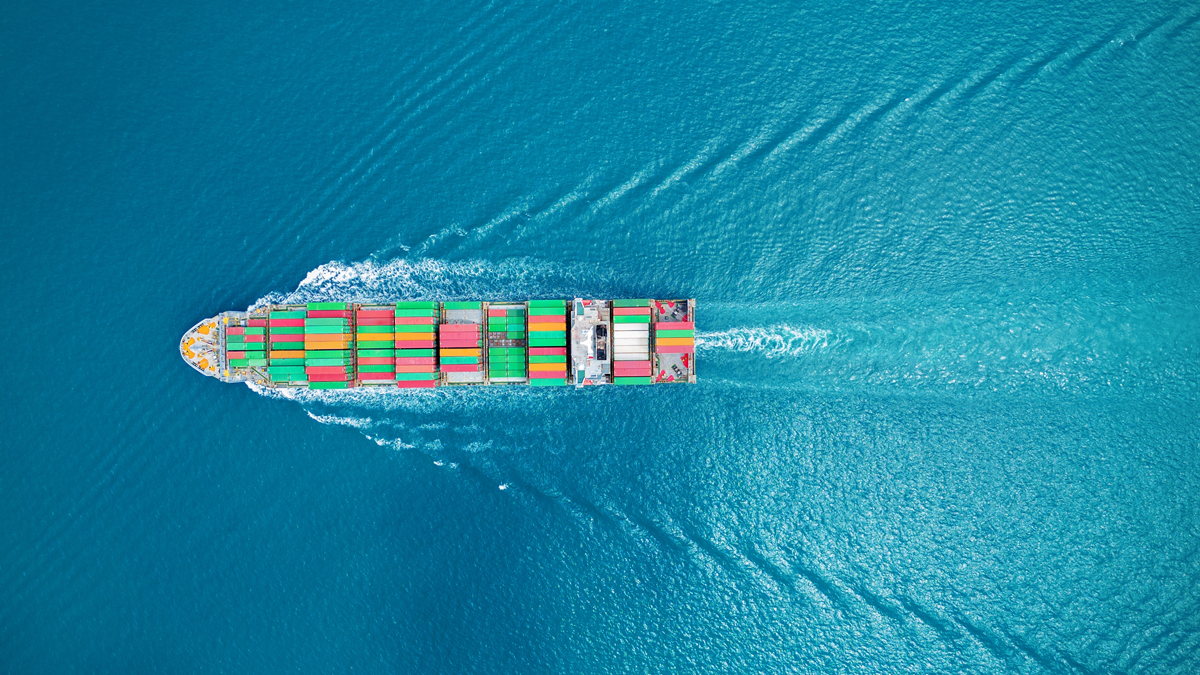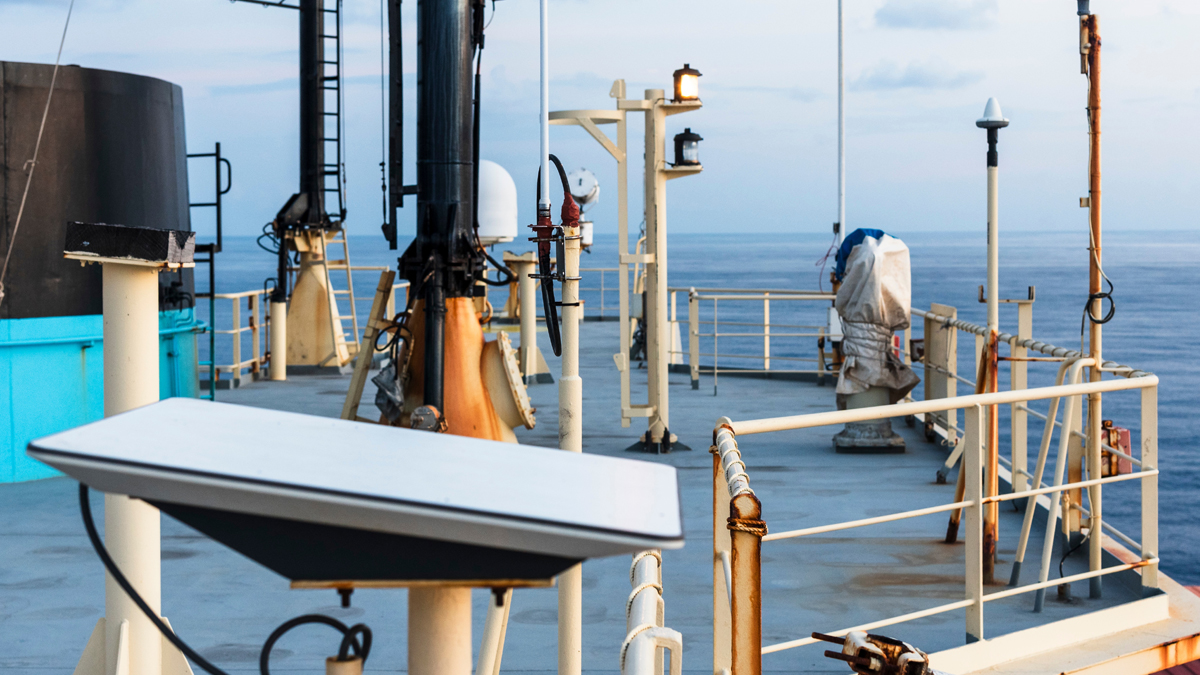
From crew connectivity to autonomous maritime systems, today’s fleets are hungry for bandwidth. The rapid growth of maritime satellite communication represents a sea change for an industry that has gone from kilobits to gigabits in just a few decades, with little sign of slowing.
The number of connected ships is growing at a rapid rate, with promising implications for the maritime satellite communications market. In 2023, the number of VSAT-connected ships stood at just 40,600. According to the latest analysis by Novaspace, that number soared to 105,000 in 2024—including previously unaddressed small vessels—and is expected to continue, growing 2.3 times to reach 244,000 over the next decade.
“The need for greater fuel efficiency and optimization of voyage performance has seen vessel operators and ship managers increasingly demand data and insights that can support better vessel performance.” Tore Morten Olsen, Marlink’s President of Maritime
“The most impactful change is towards the digitalization of the maritime sector, of which increased automation is a growing component,” said Marlink President of Maritime Tore Morten Olsen. “The need for greater fuel efficiency and optimization of voyage performance has seen vessel operators and ship managers increasingly demand data and insights that can support better vessel performance.”
As the industry evolves, so too do satellite operators and service providers. In the case of Marlink, the focus is on managed services for connectivity, network design and management, as well as digital solutions like cybersecurity and cloud services.
Starlink Makes Landfall
The accelerated trend toward digitalization follows one of the most consequential market changes in the maritime domain: the introduction of Starlink and its abundant, easily accessible, relatively inexpensive direct-to-consumer satellite internet service. By the end of 2024, Starlink had connected 75,000 vessels, roughly two-thirds of which were small ships (less than 24 meters or sub-yacht size).
“[These] were not even considered as addressable by any satcom solution in the past because these markets are extremely price-sensitive,” said Jean-Baptiste Thépaut, a principal at Novaspace and contributor to the 13th edition of Novaspace’s “Prospects for Maritime Satellite Communications” market intelligence report. “Starlink has really expanded the market in this sense.”
With access to high-speed connectivity and generous data plans, it has become common for crews to tear through 1 TB of data in a matter of days. As with the mobile industry, the more data is available, the more it will be used. However, following its rapid expansion into the maritime sector, some Starlink users are feeling stranded.
As of mid-May, Starlink phased out unlimited data plans, moving to data caps and tiered pricing for maritime. Once users exhaust priority data, they will have the option to buy more or see speeds throttled to 1 Mbps.
“With 75,000+ vessels now dependent on Starlink, the industry stands at a precarious inflection point: adapt or risk crippling costs,” wrote Edwin Lamper, executive editor and head of business relations for Riviera, a maritime industry intelligence firm. “Overnight, the industry must transition from abundance to constraint.”
The pricing change could create more opportunities for other NGSO operators to compete, like OneWeb, Telesat and Amazon Kuiper. It could also expose underlying demand for committed information rates (CIR), fueling new services or a flight to providers that offer CIR.
“The market is not really satisfied by the current Starlink monopoly in the maritime sector, and is actively looking for alternate solutions.” -Jean-Baptiste Thépaut, principal at Novaspace
“What we can say for sure is that the market is not really satisfied by the current Starlink monopoly in the maritime sector, and is actively looking for alternate solutions,” Thépaut said. “We expect a pure GEO solution will more and more take a secondary role. But we see a greater future for multi-orbit solutions combining GEO and LEO.”
Anchoring on Multi-Orbit
NGSOs are rapidly taking over the maritime market as the primary satellite connectivity solution. In 2024, NGSOs held a 46% market share in number of vessels as the primary source of maritime satellite connectivity, according to Novaspace’s “Prospects for Maritime Satellite Communications” report. Over the next decade, that share is expected to increase to 91%.

Does that mean legacy systems will cease to exist? Far from it. Large operators like Viasat-Inmarsat, Eutelsat-OneWeb and SES-Intelsat, along with managed service providers like Marlink, Speedcast and others, are adopting multi-orbit strategies. Rather than replacing GEO VSATs or MSS and L-band emergency communications, the combination across LEO and GEO could be key to unlocking speed, connectivity and resiliency for tomorrow’s maritime fleet.
As a managed service provider to one-third of the merchant maritime fleet, Marlink sees a diversity of demand for applications requiring different orbits. LEO may be perfect for low-latency applications, like video calls to shore or cloud computing for real-time data analysis and decision making. However, a high-throughput GEO link may be best for handling heavy, delay-tolerant applications, like backhauling sensor data, surveillance footage and ship analytics or video streaming.
“We see the different services available today as highly complementary. Each has its strengths and sometimes challenges too, but our approach is that they are best understood as part of a hybrid network,” Olsen said.
While not a traditional battle of LEO vs. GEO, the landscape is more competitive. More on-orbit capacity is driving lower price points and shifting producers’ focus to value-added services as well as volume. For example, in 2024, Analysys Mason reported a 5.3% decline in GEO-HTS capacity pricing for maritime, driven largely by pricing pressure from Starlink, with estimates of a further 4.5% drop in 2025. The research firm reported that GEO operators are “guarding their bottom line by adding value through managed services and first-rate service-level agreements (SLAs) for network performance.”
What’s Driving Data Demand?
With more than 80% of international trade carried by sea, it’s no wonder data demand from the maritime domain is soaring. Today’s maritime industry is placing greater emphasis on crew welfare, ship safety, domain awareness, environmental efficiency and remote operations—and each application implies digital transformation.
In terms of data volume, person-to-person connection (calls, video, social media applications) tops the list of commercial maritime data usage. While it may seem obvious, seafaring workers only recently had their right to be connected codified in the International Maritime Labor Convention in 2022. As a result, shipowners are required to provide minimal social connectivity for crews, including the right to internet access at sea.
Beyond person-to-person communication, newer fleets rely on machine-to-machine (M2M) communication for remote monitoring, maintenance and other capabilities. This allows crews or remote operators to monitor onboard systems, perform upgrades and preempt maintenance to reduce downtime and optimize performance.
Many ships are now relying on cloud-based applications to enhance efficiency and safety and collaborate in real time with teams on shore. These include fleet management systems for tracking and scheduling, weather routing tools, real-time monitoring and reporting as well as cybersecurity solutions.
Ship-based IoT, sometimes called the marine internet of things, uses sensors to observe relevant data points for various stakeholders. These sensors offer visibility for fleet management, cargo tracking, environmental monitoring and identifying onboard safety hazards. As governments across the globe enact stricter environmental regulations, more vessels are being outfitted with sensors to monitor emissions, fuel use and energy use continuously. In addition to environmental reporting, connected ships can also manage digital workflows to expedite customs clearance, loading and unloading schedules, security or other activities before arriving at port.
“More and more, ships are looking for enhanced automation, making the automation on the ship available for review, and making sure everything is running as economically as possible and environmentally friendly as possible,” said Mike McNally, director of Maritime Products for Intelsat, in a recent interview with Via Satellite. “All of this points to gathering more data from the ship than ever before. Much of that is real-time data. So, you need to have the ability to have a real connection to the ship, much more than was ever necessary in the past.”
While the industry is moving toward autonomy, it is generally assumed that uncrewed or fully autonomous vessels are still at least a decade away, given regulatory and technological challenges.
While the industry is moving toward autonomy, it is generally assumed that uncrewed or fully autonomous vessels are still at least a decade away, given regulatory and technological challenges. In the near term, connected ships will produce and consume growing volumes and frequencies of data and satellite operators and service providers, across orbits, will be critical enablers.
Explore More:
Podcast: The Evolving Maritime Market, Offices at Sea and the Impact of Starlink
How the Satellite Industry Can Adapt to Starlink’s Aggressive Price Points
Novaspace CEO: Starlink Dominates in the Evolving Maritime Market
Podcast: Integrated Space Systems, Multi-Orbit Terminals and the Future of Satcom
